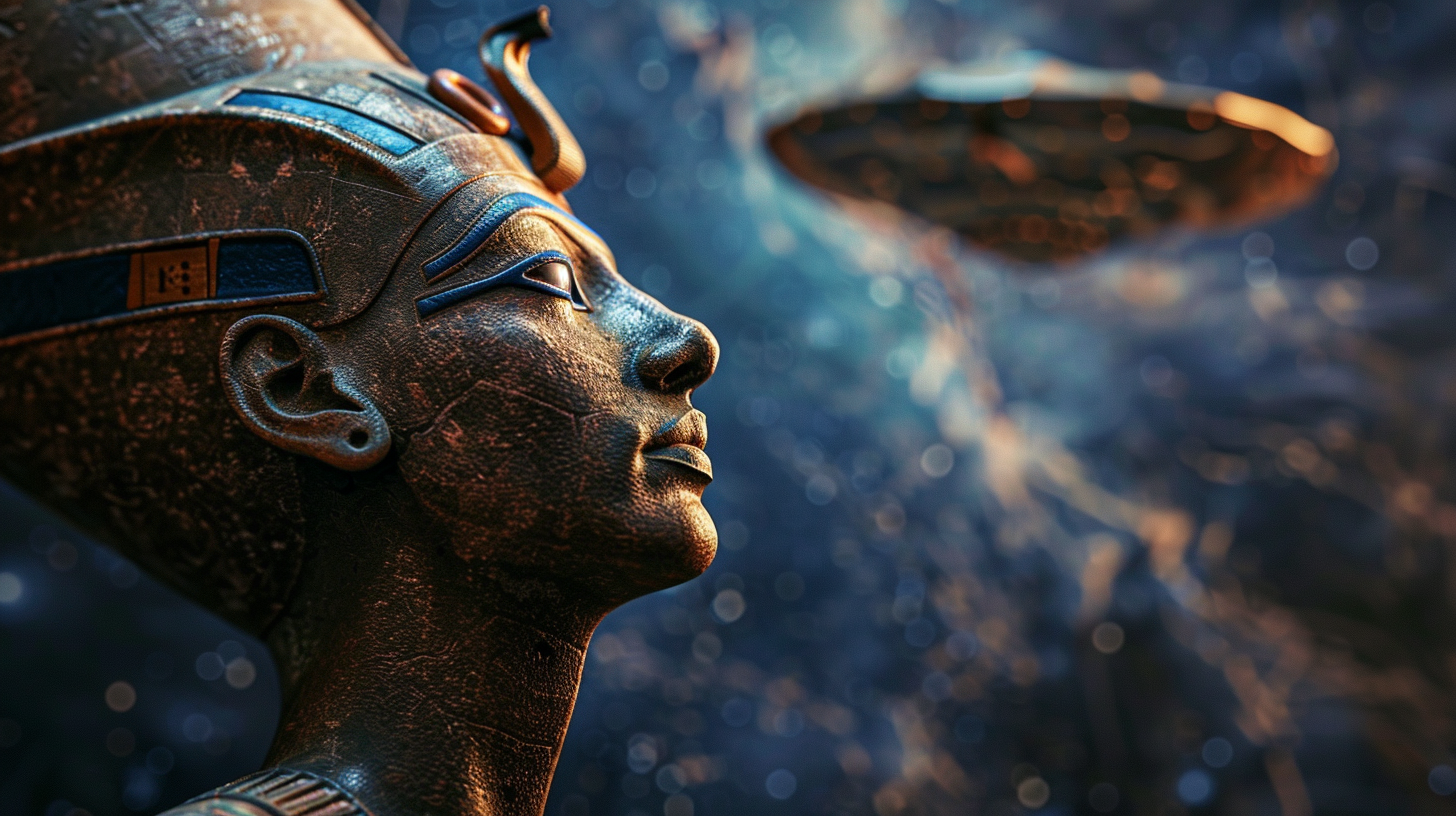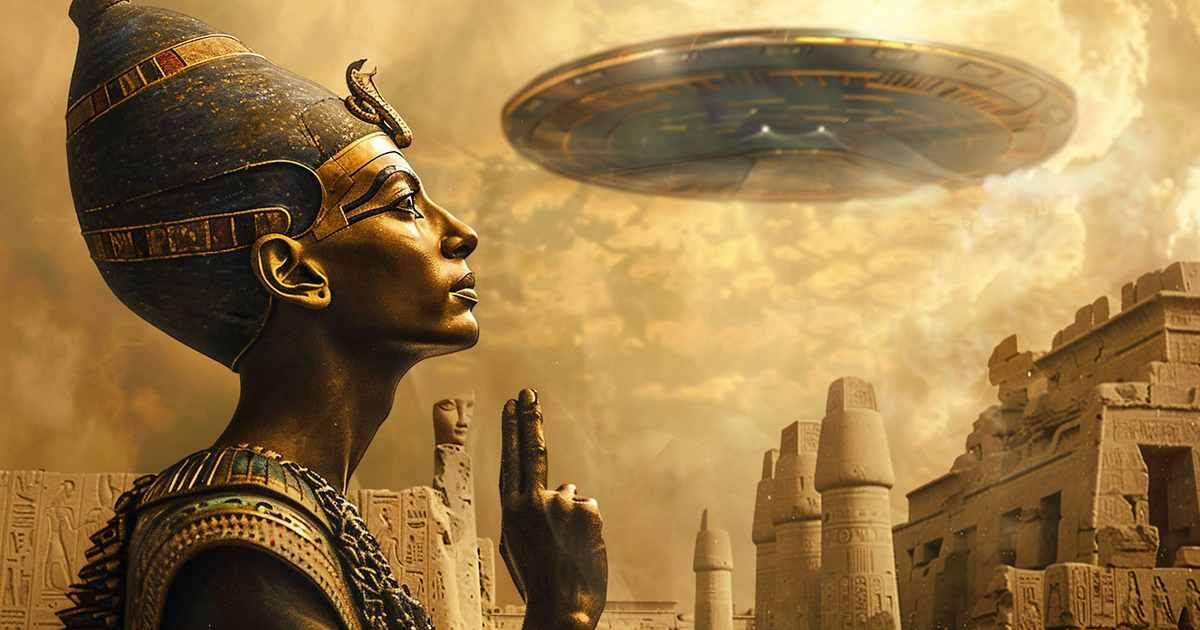Take a captivating voyage into the religious reforms enacted by Pharaoh Akhenaten in ancient Egypt, leading us into the captivating domain of Atenism. This extraordinary belief system centers around the adoration of the sun disk Aten as the supreme deity, challenging conventional notions with its unconventional rituals. Akhenaten’s reign sparked debates regarding the symbolic representations of Aten and its potential links to extraterrestrial beings, urging us to delve deeply into the mysterious world of Atenism.
Pharaoh Akhenaten’s rule, spanning from approximately 1353 to 1336 BCE, marked a significant departure from the established religious rituals of Egypt. His aim was to exalt Aten, previously a minor aspect of the sun god Ra, to the position of the sole deity while diminishing the significance of other gods. This radical transition towards monotheism was accentuated by the construction of a new capital, Akhetaten (modern-day Amarna), dedicated solely to the worship of Aten.
At the core of Atenism lies the depiction of Aten as a radiant disk emitting rays, often depicted with hands holding symbols of life, such as the ankh. Some interpretations of Aten’s image have drawn parallels to a UFO, sparking conversations about potential extraterrestrial influences on ancient Egyptian beliefs. However, it is imperative to approach such conjectures with caution and explore a variety of viewpoints rooted in ancient Egyptian cosmology and symbolism.

One hypothesis concerning the disk-shaped representation of Aten revolves around the symbolism of the sun and its life-giving properties. The ancient Egyptians held the sun in high regard as a source of vitality, light, and fertility, ascribing immense importance to its role in their daily customs. Thus, portraying Aten as a luminous disk may symbolize these fundamental attributes rather than serving as a literal depiction of a spacecraft.
Furthermore, the hands extending from Aten’s rays, often holding ankh symbols, might symbolize the sun’s nurturing function in sustaining life and ensuring continuity. The ankh symbol, resembling a handle, was linked to concepts of immortality, rebirth, and life in Egyptian beliefs. Therefore, illustrating Aten with outstretched hands bearing ankh symbols could convey the idea of the sun as a compassionate force bestowing vitality and sustenance upon the world.
Another interpretation of the disk-like portrayal of Aten arises from Akhenaten’s personal religious convictions and political motives. Some scholars propose that Akhenaten’s promotion of Atenism was motivated by a desire to consolidate his power and challenge the influential priesthood of Amun, pivotal figures in traditional Egyptian religious hierarchies. Hence, accentuating Aten as the singular deity may have been a tactical maneuver to centralize religious authority under the pharaoh’s rule.
In conclusion, while the depiction of Aten resembling a spaceship may spark discussions about extraterrestrial influences in ancient Egyptian spirituality, it is essential to explore alternative interpretations grounded in Egyptian cosmology, symbolism, and historical context. Whether symbolizing the life-affirming aspects of the sun or reflecting Akhenaten’s religious and political strategies, the worship of Aten unveils a captivating chapter in the history of ancient Egyptian civilization.
